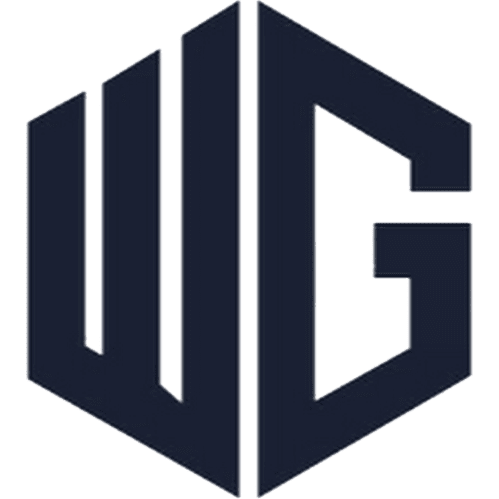Importance of content structure optimization in web development
For our Webgorgeous web development, content structure optimization plays a crucial role in ensuring that websites are not only visually appealing but also highly functional. With millions of websites competing for attention, it is essential to create engaging and user-friendly websites that stand out from the crowd.
When it comes to website development, many factors contribute to its success, such as SEO-friendly content, optimized images, and responsive design. However, one aspect that is often overlooked but is equally important is the organization and structure of the content.
A well-structured content not only helps users navigate through the website effortlessly but also enhances their overall experience. It allows them to quickly find the information they are looking for, increasing their chances of staying on the website and converting into customers.
Optimizing the content structure involves designing a logical hierarchy, utilizing clear and concise headings, incorporating relevant subheadings, and employing bullet points and numbered lists when necessary. Additionally, paragraph length and formatting should be carefully considered to ensure readability.
By implementing these content structure optimization techniques, web developers can significantly improve the user experience and boost the website’s visibility in search engine rankings. Search engines like Google prioritize websites with well-organized content, as it indicates that the website provides valuable information to users.
In this article, we will delve into the importance of content structure optimization in web development and explore the key elements and best practices for achieving an optimized content structure. We will also highlight some useful tools and resources that can assist web developers in their content optimization journey. So, let’s dive in and uncover the secrets to creating our webgorgeous websites through content structure optimization!
Understanding Content Structure
In the realm of web development, understanding the importance of content structure optimization is paramount. A well-structured content not only enhances the user experience but also plays a critical role in search engine optimization. By organizing information in a logical and reader-friendly manner, web developers can effectively convey their message and drive traffic to their websites.
Definition of Content Structure
Content structure refers to the organization and arrangement of information within a webpage or website. It involves the use of headings, subheadings, paragraphs, lists, and other formatting techniques to create a hierarchy and flow that is easy to navigate and comprehend. A well-structured content ensures that the most important information is prominently displayed, allowing users to quickly find what they are looking for.
Benefits of a Well-Structured Content
A well-structured content offers numerous benefits for both users and search engines. Let’s delve into a few of them:
1. Enhanced Readability: A clear and logical content structure improves readability, making it easier for users to consume and understand the information presented. By using descriptive headings and subheadings, readers can quickly scan the content and locate the sections that are most relevant to them.
2. Improved User Experience: When users can easily navigate through a website and find the information they need, their overall experience is enhanced. A well-structured content ensures that users can quickly access the content they desire, leading to increased engagement and satisfaction.
3. Search Engine Optimization (SEO): Search engines rely on content structure to understand the context and relevance of a webpage. By organizing content in a logical manner, using proper headings and subheadings, and incorporating relevant keywords, web developers can optimize their content for search engines. This, in turn, improves the visibility and ranking of their websites in search engine results pages.
4. Time and Effort Savings: Well-structured content saves users time and effort by presenting information in a concise and organized manner. Users can easily skim through the headings and subheadings to find the specific details they are looking for, without having to read through an entire article.
5. Consistency and Branding: Consistency in content structure not only improves readability but also enhances your brand’s image. When users visit your website and find a consistent and well-organized structure across different pages, it conveys professionalism and trustworthiness.
By optimizing the content structure of your website, you can create a seamless user experience, boost your search engine visibility, and establish a strong brand presence. In the next section, we will explore the key elements of content structure optimization and how they contribute to achieving these benefits.
Key Elements of Content Structure Optimization
When it comes to content structure optimization, there are several key elements that play a crucial role in creating a visually appealing and user-friendly experience. These elements not only enhance the overall readability of your content but also contribute to better search engine optimization (SEO) and user engagement. Let’s take a closer look at them:
Clear and Concise Headings
The first element to consider is the use of clear and concise headings. Headings serve as signposts for your readers, guiding them through the different sections of your content. By using descriptive and keyword-rich headings, you can make it easier for both readers and search engines to understand the structure and context of your content. Bold and attention-grabbing, headings help break up the text and create a sense of organization.
Logical Hierarchy
Creating a logical hierarchy is essential for content structure optimization. This involves organizing your content in a way that makes sense, with a clear progression from broader topics to more specific details. By doing so, you provide readers with a roadmap that allows them to navigate through your content effortlessly. Utilize subheadings to further categorize your content and guide readers through different sections. This logical flow not only enhances readability but also helps search engines understand the relationships between different parts of your content.
Proper Use of Subheadings
Subheadings are an integral part of content structure optimization. They break up your content into smaller, digestible sections, making it easier for readers to scan and locate the information they’re looking for. By incorporating relevant keywords in your subheadings, you can also improve the SEO value of your content. Subheadings help create a sense of hierarchy within your content, allowing readers to quickly identify and navigate to the sections that are most relevant to them.
Bullet Points and Numbered Lists
Another effective way to optimize your content structure is by using bullet points and numbered lists. These formatting elements help organize information in a concise and visually appealing manner. By presenting information in a list format, you make it easier for readers to grasp key points and takeaways. Lists also enhance scannability, allowing readers to quickly identify relevant information without feeling overwhelmed by large blocks of text.
Paragraph Length and Formatting
The length and formatting of your paragraphs can significantly impact the readability and overall structure of your content. Long paragraphs can be daunting and difficult to read, leading to reader fatigue and increased bounce rates. To optimize your content structure, aim for shorter paragraphs that are visually appealing and easy to digest. Incorporate line breaks and white space to create a visually pleasing layout that encourages readers to engage with your content.
Relevant and Engaging Content
Finally, one of the most crucial elements of content structure optimization is to ensure that your content is relevant and engaging. Regardless of how well-structured your content is, if it doesn’t provide value to your target audience, it won’t resonate with readers or search engines. Incorporate keyword optimization, compelling storytelling, and actionable insights to captivate your readers and keep them coming back for more.
By paying attention to these key elements of content structure optimization, you can create a seamless and enjoyable reading experience for your audience. Remember, a well-structured and engaging piece of content not only attracts readers but also helps boost your SEO efforts. So, take the time to optimize your content structure and watch your online presence thrive.
If you’re looking for tools and resources to help you with content optimization, check out our content optimization tools and SEO analysis tools for valuable assistance.
Best Practices for Content Structure Optimization
When it comes to content structure optimization, following best practices is essential for creating SEO-friendly and user-friendly content. By implementing these techniques, you can ensure that your website’s content is organized, easy to navigate, and effectively communicates your message to your audience. Here are some key best practices to consider:
Conducting Keyword Research
Before you begin creating your content, it’s important to conduct keyword research. This process involves identifying the most relevant and valuable keywords that your target audience is searching for. By incorporating these keywords strategically throughout your content, you can improve its visibility in search engine results and attract more organic traffic to your website.
Planning and Outlining
Before diving into writing, it’s a good practice to plan and outline your content. This helps you establish a clear structure and flow for your article or webpage, ensuring that it is easy for readers to follow. Start with a strong introduction that grabs the reader’s attention, and then outline the main points you want to cover. This will help you stay focused and organized while writing.
Using Proper HTML Markup
Proper HTML markup is crucial for content structure optimization. It helps search engines understand the hierarchy and relationships between different elements of your content. Use appropriate heading tags, such as H1, H2, and H3, to create clear and concise headings. This not only helps with readability but also signals to search engines the importance of each section.
Incorporating Visual Elements
Visual elements, such as images, infographics, and videos, can enhance your content and make it more engaging for readers. Including relevant visuals breaks up the text and provides visual cues that help readers understand your message more effectively. Be sure to optimize your images by using descriptive alt tags and compressing them for faster loading times.
Optimizing for Mobile Devices
In today’s mobile-first world, optimizing your content for mobile devices is crucial. Ensure that your website is responsive and adapts to different screen sizes. This includes using a responsive design, optimizing images and videos for mobile viewing, and ensuring that your content is easily readable on smaller screens. Mobile optimization not only improves the user experience but also helps with search engine rankings.
By following these best practices, you can optimize your content structure and improve your website’s visibility, user experience, and overall performance. Remember, content structure optimization is an ongoing process, so regularly analyze and refine your content to stay ahead of the competition.
For more information on content optimization and helpful tools, check out our content optimization tools and content optimization best practices articles.
Tools and Resources for Content Structure Optimization
When it comes to optimizing the structure of your web content, having the right tools and resources at your disposal can make a significant difference. These tools and resources not only help you streamline the content creation process but also ensure that your content is structured in a way that is visually appealing and easy to navigate. In this section, we will explore some essential tools and guidelines that can assist you in optimizing your content structure.
Content Planning Tools
Before diving into the actual writing process, it’s crucial to have a clear plan in place. Content planning tools can help you organize your thoughts, outline your ideas, and establish a logical flow for your content. These tools often provide features such as mind mapping, outlining, and collaboration, allowing you to visualize the structure of your content and ensure that it aligns with your goals.
Some popular content planning tools include:
- MindMeister: A powerful mind mapping tool that enables you to brainstorm ideas, create visual outlines, and collaborate with others in real-time.
- Trello: A flexible project management tool that allows you to create boards, lists, and cards to organize your content ideas and track your progress.
- Evernote: A versatile note-taking app that lets you capture and organize your ideas, create checklists, and sync your content across multiple devices.
By utilizing these content planning tools, you can structure your content effectively and stay organized throughout the writing process.
HTML Markup Guidelines
Optimizing your content structure goes hand in hand with using proper HTML markup. HTML markup guidelines provide you with a set of rules and best practices to follow when structuring your web content. These guidelines ensure that your content is semantically structured, which not only improves readability but also enhances search engine optimization.
Some essential HTML markup guidelines to consider include:
- Using appropriate heading tags: Headings play a crucial role in organizing your content hierarchy. By using the correct heading tags (e.g., H1 for main headings, H2 for subheadings), you provide a clear structure for both readers and search engines.
- Utilizing semantic elements: HTML5 introduced semantic elements such as
<article>,<section>, and<nav>, which help in structuring your content and conveying its meaning. - Properly formatting lists: When using bullet points or numbered lists, ensure that they are correctly formatted using the appropriate HTML list tags (
<ul>for unordered lists and<ol>for ordered lists). - Adding alt text to images: Including descriptive alt text for images not only improves accessibility but also helps search engines understand the context of your content.
By adhering to HTML markup guidelines, you can optimize your content structure for both humans and search engines, leading to a better user experience and increased visibility.
SEO Analysis Tools
To ensure that your content structure is optimized for search engines, utilizing SEO analysis tools can provide valuable insights and recommendations. These tools analyze your content from an SEO perspective, highlighting areas for improvement and suggesting optimizations to enhance your rankings.
Some useful SEO analysis tools include:
- Ahrefs: A comprehensive SEO toolset that offers features such as keyword research, backlink analysis, and content optimization suggestions.
- Moz: A popular SEO software suite that provides tools for keyword research, site audits, and rank tracking.
- SEMrush: A versatile SEO platform that offers features like competitor analysis, keyword tracking, and content optimization recommendations.
By leveraging these SEO analysis tools, you can gain valuable insights into how to structure your content for maximum visibility and organic traffic.
In conclusion, optimizing the structure of your web content is crucial for both user experience and search engine optimization. By utilizing content planning tools, following HTML markup guidelines, and leveraging SEO analysis tools, you can ensure that your content is well-structured, visually appealing, and optimized for maximum impact. So, take advantage of these tools and resources to create content that captivates your audience and boosts your online presence.
Conclusion
In conclusion, optimizing the structure of your content is an essential aspect of web development. By organizing your content in a clear and logical manner, you can enhance the user experience and improve your website’s visibility on search engines.
A well-structured content not only makes it easier for readers to navigate and understand your information but also helps search engines to crawl and index your website more effectively. By incorporating clear and concise headings, logical hierarchy, proper use of subheadings, bullet points and numbered lists, paragraph length and formatting, and relevant and engaging content, you can create a content structure that is both user-friendly and search engine-friendly.
To optimize your content structure, it is important to follow best practices such as conducting keyword research, planning and outlining your content, using proper HTML markup, incorporating visual elements, and optimizing for mobile devices. These practices ensure that your content is not only well-structured but also optimized for SEO and user engagement.
There are various tools and resources available to assist you in optimizing your content structure. Content planning tools can help you organize and outline your content effectively, while HTML markup guidelines ensure that your content is properly formatted for search engines. Additionally, SEO analysis tools can provide valuable insights and recommendations for improving your content structure.
By implementing these strategies and utilizing the available tools and resources, you can achieve an optimized content structure that drives traffic, improves user experience, and boosts your website’s visibility in search engine rankings. So, make sure to invest time and effort in optimizing your content structure to maximize the potential of your website.
For more information and tips on content optimization, feel free to explore our blog posts on content optimization tools, SEO-friendly content, and other related topics. Remember, an effectively optimized content structure is the foundation for success in the digital world. Happy optimizing!












0 Comments